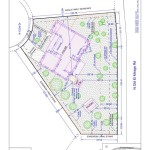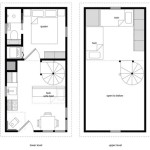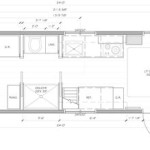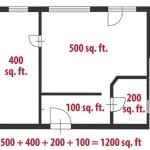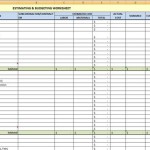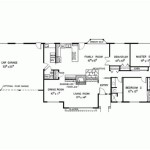Essential Aspects of Sample House Floor Plan With Dimensions
A well-designed house floor plan is crucial for creating a functional and aesthetically pleasing living space. It not only determines the overall layout and flow of your home but also influences the comfort, livability, and functionality of each room.
When designing a house floor plan, it's important to consider the following essential aspects:
### Room DimensionsThe dimensions of each room are critical in determining its overall size, shape, and functionality. Consider the intended purpose of each room, the number of occupants, and the furniture and appliances that will be used. Adequate space should be allocated to ensure comfortable movement, natural lighting, and a sense of openness.
### Room AdjacenciesThe adjacency of rooms influences the overall flow of the house. Rooms that are frequently used together, such as the kitchen and dining room, should be adjacent to each other. Consider the natural flow of traffic and the privacy requirements of different rooms when determining their adjacencies.
### Traffic FlowThe floor plan should ensure smooth and efficient traffic flow throughout the house. Avoid creating narrow hallways or cramped spaces that hinder movement. The entryway should be spacious enough to accommodate guests and provide easy access to the main living areas.
### Natural LightingNatural lighting plays a significant role in creating a comfortable and inviting living space. The floor plan should maximize the use of windows and skylights to bring natural light into the rooms. Consider the orientation of the house and the position of the windows to optimize sunlight while minimizing glare.
### VentilationAdequate ventilation is essential for a healthy indoor environment. Cross-ventilation, where air flows through the house from multiple directions, can help remove stale air and reduce the risk of moisture buildup. Consider the placement of windows, doors, and vents to ensure proper airflow.
### StorageEvery house needs ample storage space for various belongings. The floor plan should incorporate closets, cabinets, and built-in storage solutions to minimize clutter and maximize functionality. Consider the storage requirements of each room and design designated spaces for specific items.
### AccessibilityThe floor plan should consider accessibility for all users, including individuals with disabilities or mobility impairments. Ramps, wider doorways, and accessible bathrooms can be incorporated to ensure a safe and comfortable living environment for all.
### Style and AestheticsIn addition to functional considerations, the floor plan should also reflect the desired style and aesthetics of the home. The layout, room shapes, and architectural details can be tailored to create the desired ambiance, whether it's traditional, modern, rustic, or contemporary.
### ConclusionCreating a well-designed house floor plan is a complex undertaking that involves a balance of functionality, comfort, and aesthetics. By addressing the essential aspects discussed above, you can develop a floor plan that meets your specific needs and creates a home that is both practical and enjoyable to live in.

12 Examples Of Floor Plans With Dimensions

Floor Plans With Dimensions Including Examples Cedreo

Small House Floor Plan With Dimensions Template

Free Floorplan Template Inspirational Home Plans Sample House Floor Simple Plan Layout

Ready To Use Sample Floor Plan Drawings Templates Easy Blue Print Floorplan Ezblueprint Com

Sample Floor Plan Image With The Specification Of Diffe Room Sizes Scientific Diagram

How To Read A Floor Plan With Dimensions Houseplans Blog Com

How To Read A Floor Plan With Dimensions Houseplans Blog Com

Image Result For Floor Plans With Dimensions L Bedroom Guest House Tiny Pool Small

Free Editable Open Floor Plans Edrawmax
Related Posts

